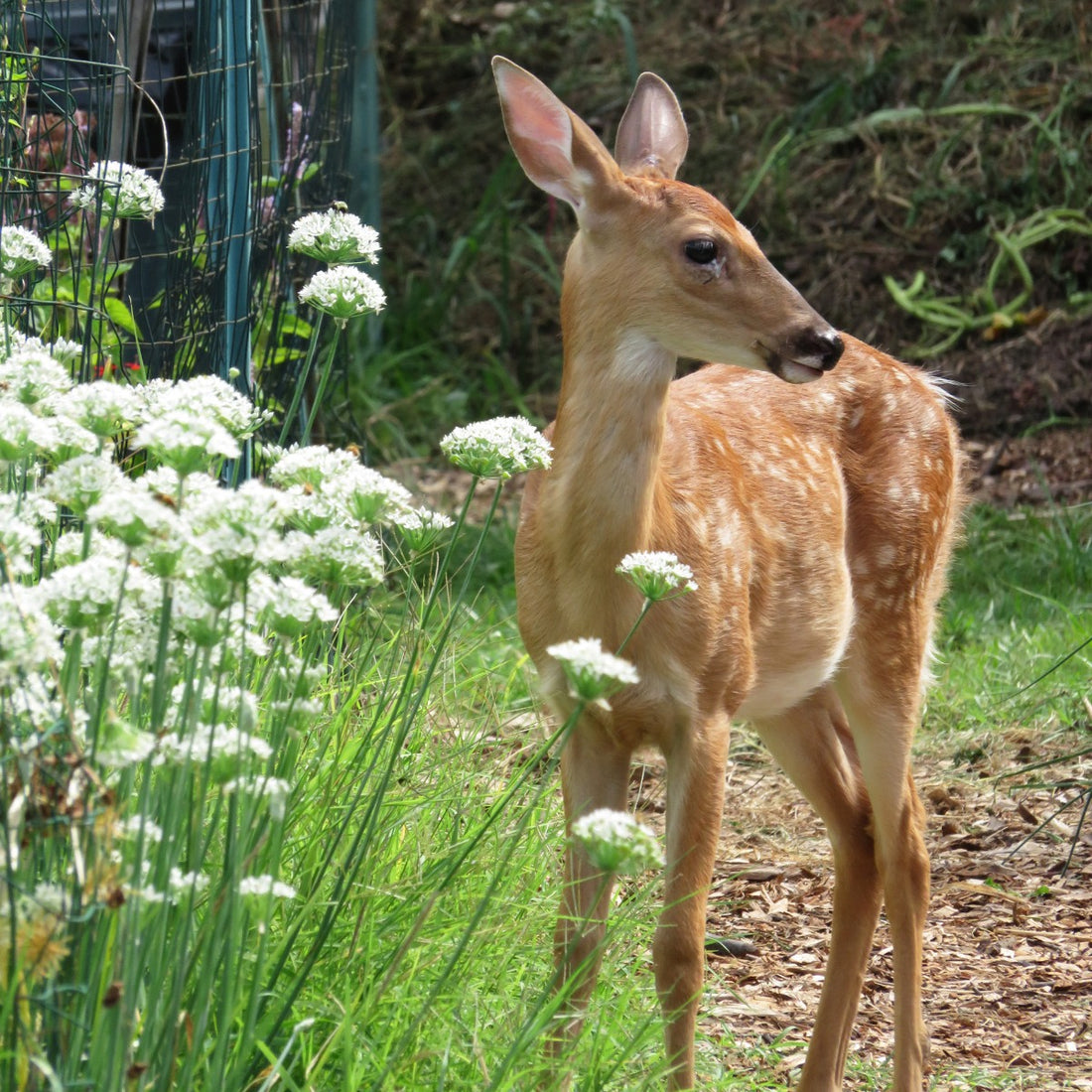For the passionate gardener, few things are more disheartening than watching your carefully tended plants become a veritable deer buffet overnight. These graceful yet voracious creatures can decimate your hard work in a matter of hours, leaving your garden beds looking like a war zone. But fear not - with the right combination of deterrents and strategic planning, you can reclaim your garden and outdoor oasis and keep those four-legged foragers at bay.
Understanding Deer Behavior: The Key to Effective Deterrence
Before we dive into the nitty-gritty of deer-proofing your garden, it's essential to understand the behavioral patterns and feeding habits of these troublesome visitors. Deer are not just aimlessly wandering; they are on a constant quest for food and they can consume an estimated 6-8 pounds of food per day. Their natural habitat is typically the edge where the forest meets open spaces, as this provides them with a diverse array of edible plants.
Deer possess a keen sense of smell that guides them to the most appetizing and nutritious meals. This makes your carefully curated garden beds a veritable smorgasbord. Their climbing and jumping abilities allow them to access even the most seemingly inaccessible plants. They are a formidable foe for any gardener. Understanding these behavioral traits is the first step in developing an effective deterrence strategy.
Multilayered Defenses
Keeping deer out of your garden is often a multi-pronged endeavor, as what works for one gardener may only slightly inconvenience another's antlered adversaries. By employing a diverse array of deterrents, you can create a layered defense system that keeps these persistent pests at bay. You may have to try several options or combine several solutions to create deer free zone in your backyard.
Repellent Sprays and Solutions
One of the most common and effective strategies is the use of deer-repellent sprays. These products, often containing a combination of ingredients like rotten eggs, essential oils, and blood meal, create an unpleasant sensory experience for deer. The key is to start applying these repellents early, at the first signs of new growth, and to reapply them regularly, especially after rain or heavy watering.
Scent Deterrents
Deer have an acute sense of smell, and you can leverage this to your advantage. Strategically placing items with strong scents, such as hot pepper sprays, ammonia-soaked rags, or bars of strongly scented soap, can create a barrier that keeps deer away. Predator urine, particularly that of coyotes, can also be an effective deterrent, as it gives deer the impression that danger is nearby.
Auditory and Visual Deterrents
Deer are naturally skittish creatures, and unexpected noises can help deter them from your garden. Fluttering fabric softener strips, wind chimes, and motion-activated sprinklers can all contribute to creating an environment that feels less inviting to these wary visitors. Visual deterrents, such as scarecrows or reflective surfaces, can also be effective, though deer may quickly become accustomed to static objects. This category of deterrents doesn't usually work for a long time.
Physical Barriers and Fencing
A well-designed physical barrier is usually the most reliable solution. Deer are impressive jumpers, capable of clearing barriers up to 8 feet tall, so investing in a tall fence is often a game-changer. Electric fencing, while requiring more maintenance, can provide a surefire deterrent. These fences deliver a light shock to discourage deer from attempting to breach the perimeter. For smaller areas or raised beds, chicken wire or UV-protected plastic netting can be an effective and less visually obtrusive option.
Strategic Garden Design and Plant Selection
In addition to physical and sensory deterrents, the very composition of your garden can play a significant role in keeping deer at bay. Filling your landscape with plants that deer find unpalatable, such as aromatic herbs, moisture-rich species, and certain flowering annuals, can create a less enticing environment for these herbivores. Strategically layering these deer-resistant plants around more vulnerable specimens can further enhance your garden's protection.
Maintenance and Vigilance
Keeping deer out of your garden is an ongoing battle, and it's crucial to maintain a vigilant approach. Regularly monitoring your garden for signs of deer activity and adjusting your deterrent strategies accordingly is key to long-term success. Be prepared to switch up the placement and timing of your scare tactics, as deer can quickly become accustomed to static objects or predictable patterns.
Remember, every garden and its deer population are unique, so a one-size-fits-all approach may not always work. By experimenting with a combination of deterrents, tailoring your strategies to your local deer population, and staying proactive in your maintenance efforts, you can reclaim your outdoor oasis and enjoy the fruits of your labor without the constant threat of unwanted visitors.



